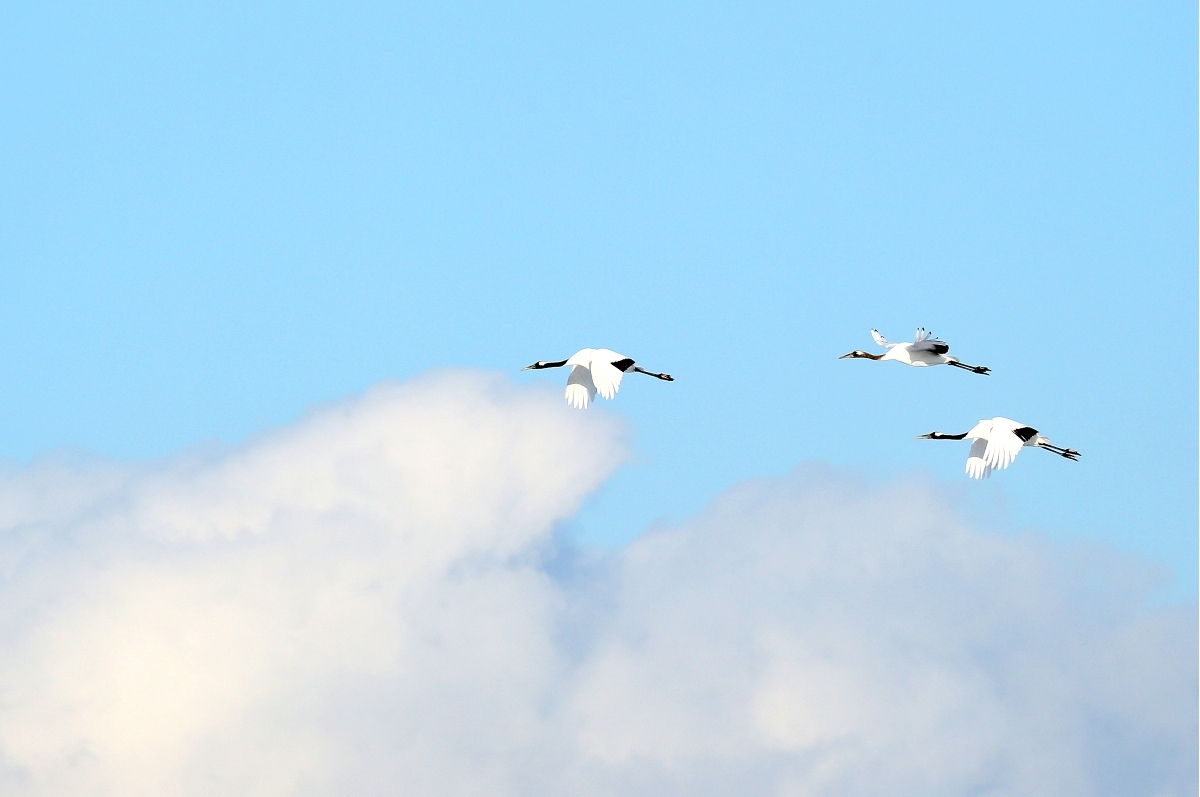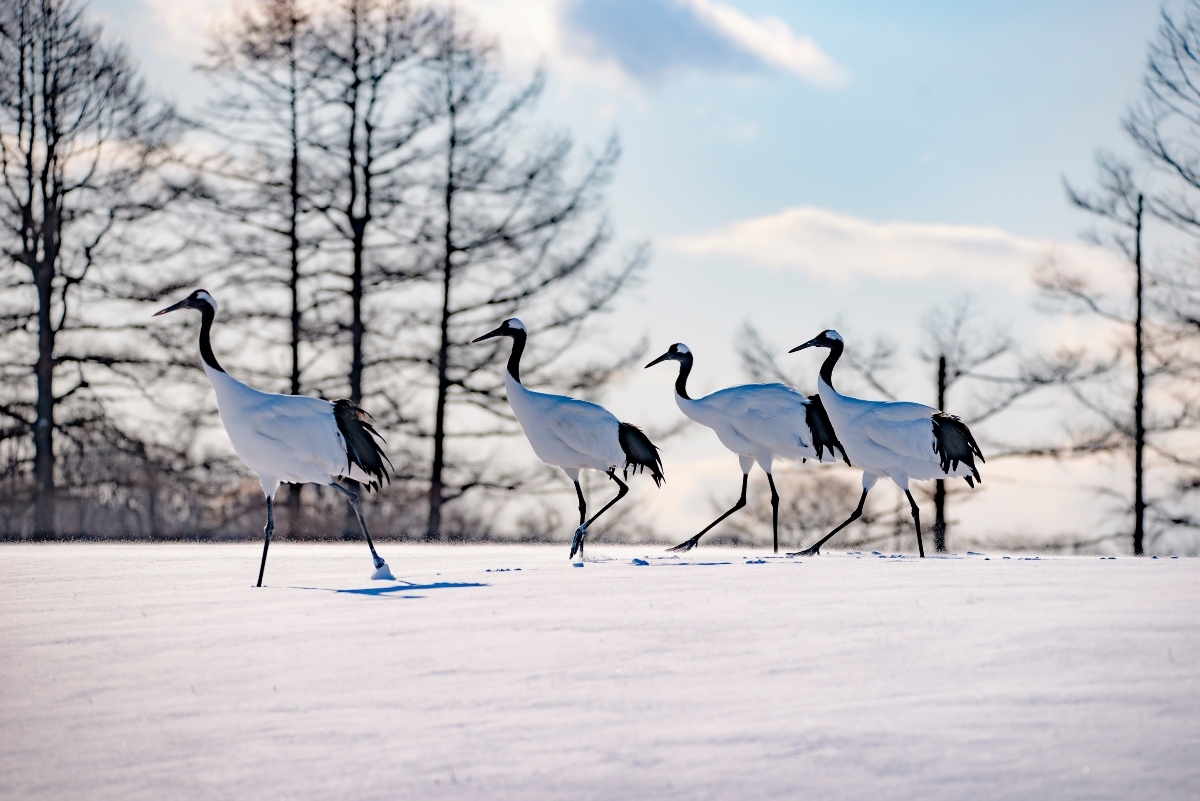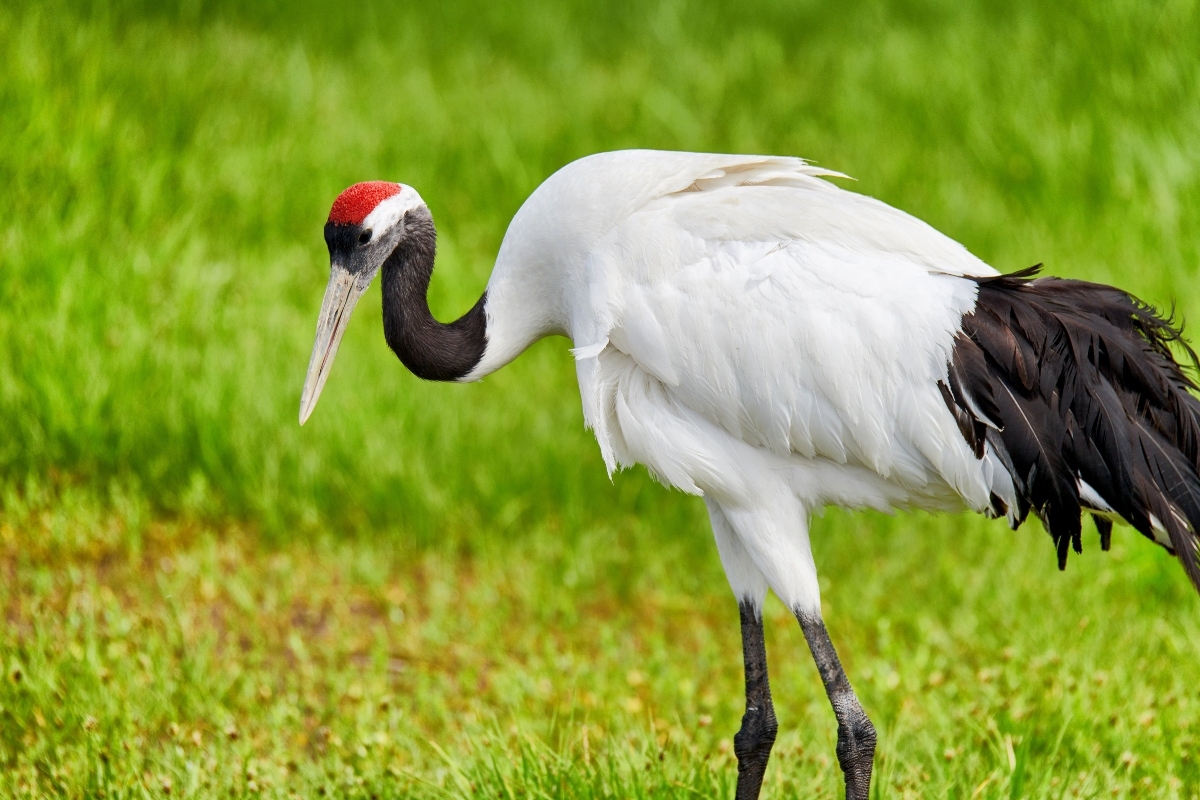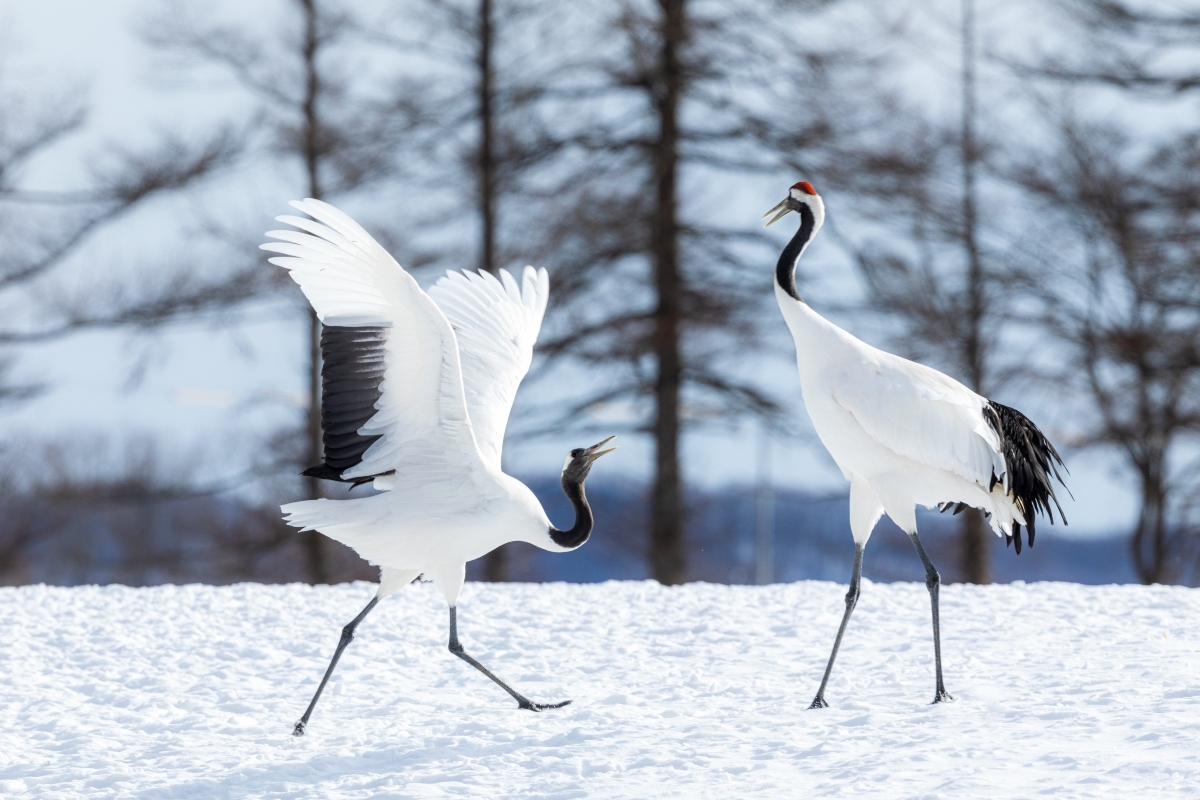The Red-crowned Crane (Grus japonensis), also known as the Japanese Crane or Manchurian Crane, stands as a majestic and emblematic figure in the avifauna of East Asia. Renowned for its striking appearance and graceful demeanor, this crane species inhabits a variety of environments ranging from wetlands and marshes to riverbanks and agricultural fields in regions of China, Japan, Korea, and Russia.

The physical characteristics of the Red-crowned Crane are truly captivating. It boasts a tall and stately stature, with a body predominantly covered in pristine white feathers. The crane is aptly named for the patch of bare, bright red skin atop its head, which contrasts strikingly against its white plumage. The black feathers stretching from the neck to the back and lower body add a touch of elegance and poise to its overall appearance.
The Red-crowned Crane engages in a variety of feeding habits, primarily foraging on the ground for its food. Its diet is diverse, consisting of a mix of plants, small fish, amphibians, and insects. The crane uses its long, sharp bill to probe the soil and water in search of its prey, showcasing a remarkable adaptability in its feeding strategies.

One of the most notable and endearing behaviors of the Red-crowned Crane is its intricate and synchronized mating dance. Pairs of cranes perform this captivating dance, which involves a series of graceful leaps, bows, and vocalizations, serving as a strong bonding activity between mates and a display of fitness and compatibility.
Nesting occurs primarily in wetland areas, where the female lays and incubates her eggs while both parents take part in the rearing of the chicks. The nests are often situated in secluded and undisturbed locations, providing a safe environment for the young cranes to grow and develop.

The vocalizations of the Red-crowned Crane are as striking as its physical appearance, producing a range of trumpeting calls that resonate across its habitat. These calls play a crucial role in communication between mates, marking territory, and coordinating during their migrations.
Despite its cultural significance and protected status in many regions, the Red-crowned Crane faces numerous threats, primarily habitat loss and degradation. Wetlands, crucial for the crane’s survival, are increasingly being drained for agricultural development, while industrialization and urbanization pose additional challenges.

Conservation efforts are underway to protect the habitats and populations of the Red-crowned Crane, ensuring that this iconic species continues to grace the landscapes of East Asia with its elegance and beauty. In the delicate dance of conservation, the Red-crowned Crane stands as a testament to the beauty and fragility of the natural world, a symbol of hope and resilience amidst the challenges of the modern age.